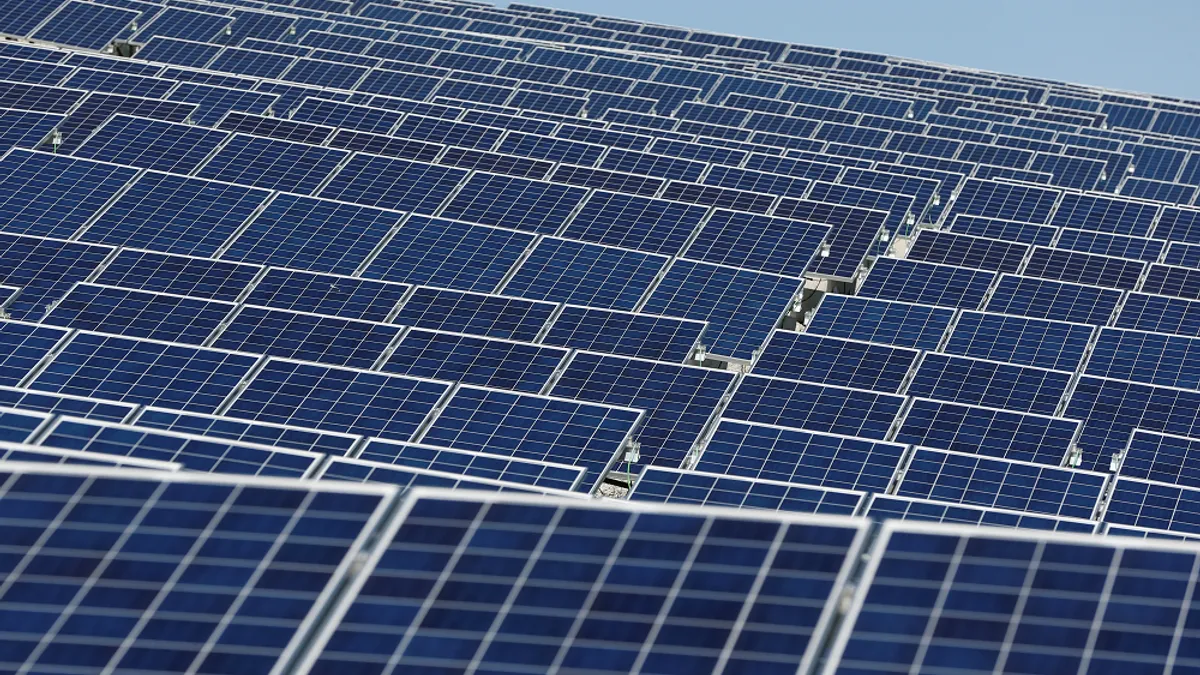Dive Brief:
- New analysis from Lazard concludes the cost of renewable energy continues to fall, though the firm's most recent levelized cost of energy (LCOE) analysis, released Thursday, also warns the rate of decline is slowing.
- Solar and onshore wind remain cost competitive with the marginal cost of existing conventional generation technologies, according to the new analysis. Costs for utility-scale solar have been falling about 13% annually for the last five years while onshore wind costs have declined a more modest 7% annually.
- Lazard has also released its levelized cost of storage (LCOS) analysis, concluding lithium-ion batteries, in particular for short-duration applications, are cheapest compared to other technologies and chemistries thanks to improving efficiencies and a maturing supply chain.
Dive Insight:
Lazard's annual analysis shows continued declines in the cost of renewable technologies are pressuring conventional resources, but also makes clear that regional variations and dispatch challenges for intermittent resources remain a factor in determining the most economical mix.
When federal subsidies are included, Lazard found the cost of building new onshore wind ($28/MWh, on average) and utility-scale solar ($36/MWh) were competitive with the marginal cost of coal ($34/MWh) and nuclear generation ($29/MWh).
On an unsubsidized basis some resources, particularly wind, remain cost-competitive with conventional generation technologies "under certain circumstances," according to Lazard. Onshore wind resources on an unsubsidized basis range from $28/MWh to $54/MWh.
Wind and solar cost declines have been driven by the falling price of system components and improvements in efficiency, among other factors, Lazard said. But the industries are maturing, the firm warned, and "the rates of decline have diminished."
Regional differences in resource availability and fuel costs can drive "meaningful variance" in the LCOE of certain technologies, Lazard cautioned. And without associated energy storage, "these resources lack the dispatch characteristics, and associated benefits, of such conventional technologies."
However, the firm's LCOS report has good news on that front.
"Solar PV + storage systems are economically attractive for short-duration wholesale and commercial use cases, though they remain challenged for residential and longer-duration wholesale use cases," the firm said.
Comparing the unsubsidized LCOS in terms of energy, Lazard found 100 MW/200 MWh systems ranged from $173/MWh to $315/MWh. Residential systems sized 0.006 MW/0.025 MWh had costs from $457/MWh to $663/MWh.
The storage report shows "significant cost declines across most use cases, despite industry concern about rising costs for future deliveries of Lithium-ion systems due to higher commodity pricing and challenges related to storage module availability."
Lazard noted that cost declines for storage modules were more pronounced than for system components or operations and maintenance. And year-over-year cost declines were less pronounced than what the firm observed a year ago.
"The previously observed trend of growing cost disparity within use cases continued, as the gap between the lowest- and highest-cost systems increased, on a relative basis," versus the previous LCOS analysis, the firm said.















